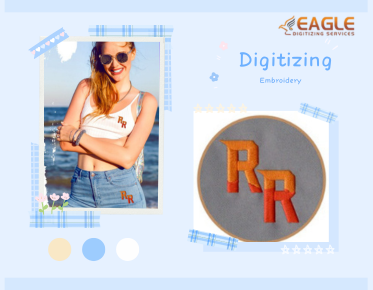Getting Started with Embroidery Digitizing
Embroidery digitizing is a fascinating blend of art and technology, allowing you to transform your creative designs into beautiful embroidered pieces. Whether you're a hobbyist looking to expand your skills or a business owner aiming to offer custom embroidery services, understanding the basics of embroidery digitizing is essential. This guide will walk you through the steps to get started and explore the tools and techniques involved in this craft.
Understanding Embroidery Digitizing
Embroidery digitizing is the process of converting artwork into a digital file that can be read by an embroidery machine. This file dictates the path of the needle, determining where stitches will be placed to recreate the design on fabric. The process involves using specialized software to map out the design, considering factors like stitch type, direction, and density.
Essential Tools and Software
To begin with embroidery digitizing, you'll need a few key tools:
- Embroidery Software: This is the core tool for digitizing. Popular options include Wilcom, Hatch, and Brother PE-Design. These programs offer a range of features to help you create and edit embroidery designs.
- Computer: A reliable computer with sufficient processing power and memory is crucial, as digitizing software can be resource-intensive.
- Embroidery Machine: Once your design is digitized, you'll need an embroidery machine to bring it to life. Machines vary in capabilities, so choose one that suits your needs and budget.
Steps to Start Embroidery Digitizing
1. Learn the Basics
Before diving into digitizing, familiarize yourself with embroidery techniques and terminology. Understanding stitch types, fabric behavior, and design principles will help you create better digitized designs.
2. Choose the Right Software
Select a digitizing software that matches your skill level and project requirements. Many programs offer trial versions, allowing you to test features before committing. For beginners, software with user-friendly interfaces and comprehensive tutorials is ideal.
3. Practice with Simple Designs
Start with simple designs to build your skills. Focus on mastering basic shapes and stitch types before moving on to more complex projects. As you gain confidence, experiment with different styles and techniques.
4. Understand File Formats
Embroidery machines require specific file formats to read designs. Common formats include DST, PES, and EXP. Ensure your software can export designs in the format compatible with your machine.
Working with Professional Services
If you're not ready to digitize your own designs, consider using professional embroidery digitizing services. Companies like Eagle Digitizing offer expert services to convert your artwork into high-quality embroidery files. They provide quick turnaround times and ensure that designs are optimized for smooth machine operation.
Exploring Advanced Techniques
As you become more proficient, explore advanced digitizing techniques such as 3D puff embroidery, applique, and sequin embroidery. These techniques add depth and texture to your designs, making them stand out.
Benefits of Embroidery Digitizing
Embroidery digitizing offers numerous benefits, including the ability to customize designs, improve stitch accuracy, and increase production efficiency. It opens up opportunities for creating personalized gifts, promotional items, and branded apparel.
Future Trends in Embroidery Digitizing
The future of embroidery digitizing is promising, with advancements in software and machine technology. As AI and machine learning continue to evolve, we can expect more intuitive software that simplifies the digitizing process. Additionally, the integration of cloud-based platforms will enable collaborative design and remote access to digitizing tools.
Embroidery digitizing is a rewarding skill that combines creativity with technical expertise. Whether you're creating custom designs for personal use or offering professional services, the possibilities are endless. As you embark on your digitizing journey, remember to stay curious, keep learning, and enjoy the art of transforming ideas into embroidered masterpieces.



